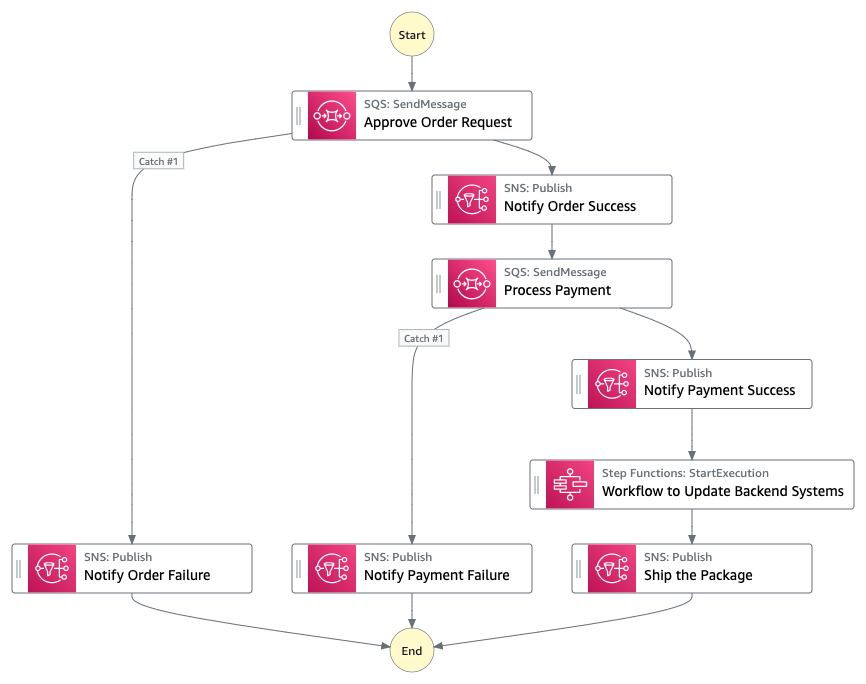AWS Compute Blog
Category: Serverless
Announcing server-side encryption with Amazon Simple Queue Service -managed encryption keys (SSE-SQS) by default
SQS now provides server-side encryption (SSE) using SQS-owned encryption (SSE-SQS) by default. This enhancement makes it easier to create SQS queues, while greatly reducing the operational burden and complexity involved in protecting data.
ICYMI: Serverless Q3 2022
Welcome to the 19th edition of the AWS Serverless ICYMI (in case you missed it) quarterly recap. Every quarter, we share all the most recent product launches, feature enhancements, blog posts, webinars, Twitch live streams, and other interesting things that you might have missed! In case you missed our last ICYMI, check out what happened […]
Integrating Amazon MemoryDB for Redis with Java-based AWS Lambda
This post is written by Mansi Y Doshi, Consultant and Aditya Goteti, Sr. Lead Consultant. Enterprises are modernizing and migrating their applications to the AWS Cloud to improve scalability, reduce cost, innovate, and reduce time to market new features. Legacy applications are often built with RDBMS as the only backend solution. Modernizing legacy Java applications […]
Lifting and shifting a web application to AWS Serverless: Part 2
In this two-part article, you learn if it is possible to migrate a non-serverless web application to a serverless environment without changing much code. You learn different tools that can help you in this process, like AWS Lambda Web Adaptor and AWS Amplify, and how to solve some of the typical challenges that we have, like storage and authentication.
Lifting and shifting a web application to AWS Serverless: Part 1
In this article, you learn if it is possible to migrate a non-serverless web application to a serverless environment without changing much code. You learn different tools that can help you in this process, like the AWS Lambda Web Adaptor and AWS Amplify.
Introducing message data protection for Amazon SNS
This post shows how message data protection enables a topic owner to discover and protect sensitive data that is exchanged through SNS topics. The example shows how to create a data protection policy that generates audit reports for sensitive data and blocks messages from delivery to specific subscribers if the payload contains sensitive data.
Introducing new intrinsic functions for AWS Step Functions
Developers use AWS Step Functions, a low-code visual workflow service to build distributed applications, automate IT and business processes, and orchestrate AWS services with minimal code. Step Functions Amazon States Language (ASL) provides a set of functions known as intrinsics that perform basic data transformations. Customers have asked for additional intrinsics to perform more data […]
Building cost-effective AWS Step Functions workflows
Builders create AWS Step Functions workflows to orchestrate multiple services into business-critical applications with minimal code. Customers are looking for best practices and guidelines to build cost-effective workflows with Step Functions. This blog post explains the difference between Standard and Express Workflows. It shows the cost of running the same workload as Express or Standard […]
Deploying AWS Lambda functions using AWS Controllers for Kubernetes (ACK)
This blog post shows how AWS Controllers for Kubernetes enables you to deploy a Lambda function directly from your Amazon EKS environment. AWS Controllers for Kubernetes provides a convenient way to connect your Kubernetes applications to AWS services directly from Kubernetes.
Speeding up incremental changes with AWS SAM Accelerate and nested stacks
This blog written by Jeff Marcinko, Sr. Technical Account Manager, Health Care & Life Sciencesand Brian Zambrano, Sr. Specialist Solutions Architect, Serverless. Developers and operators have been using the AWS Serverless Application Model (AWS SAM) to author, build, test, and deploy serverless applications in AWS for over three years. Since its inception, the AWS SAM […]









